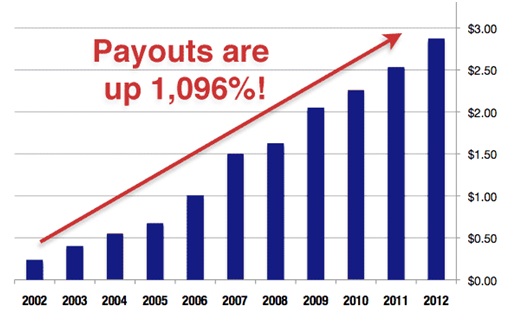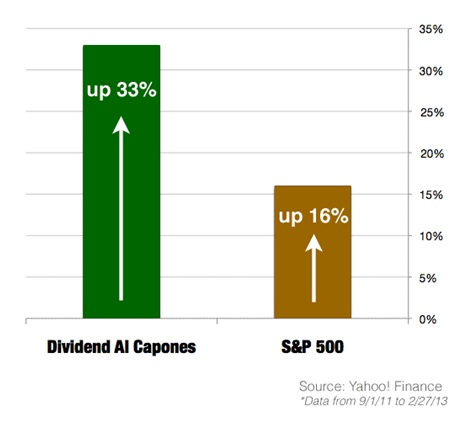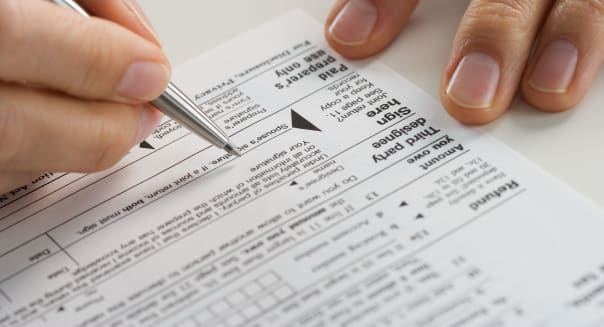Hey Let's Get Rich
DONATE HERE
Don't buy this, buy that! 55 stocks to own in 2015

DONATE HERE
Sometimes the smartest actions are the ones you don’t take. That old dictum seems relevant at a moment when the markets are a paradox: Each new high only makes many veteran investors more nervous that disaster looms. Between lofty valuations, slowdowns from Europe to China, conflict from Ukraine to Syria, the end of the Fed’s bond-buying binge, and more, there are many reasons for caution. That’s why this year we decided to recommend not only investments to make but also ones to avoid. Smart defense is always wise, and the good news is that even in these precarious times, there are still opportunities to be found.
DON’T BUY SMALL-CAPS
Small-cap stocks trade at a 25% premium to the large-caps of the S&P 500, implying they will underperform the index by that much, argues Doug Ramsey, chief investment officer of the Leuthold Group. Concurs Russ Koesterich, global chief investment strategist for BlackRock BLK -0.01% : “Reasonable is the new cheap: What can you look for that has some cushion in it?” He adds that small companies also fare worse than bigger ones when interest rates rise, as is expected in the near future.
Small-cap stocks trade at a 25% premium to the large-caps of the S&P 500, implying they will underperform the index by that much, argues Doug Ramsey, chief investment officer of the Leuthold Group. Concurs Russ Koesterich, global chief investment strategist for BlackRock BLK -0.01% : “Reasonable is the new cheap: What can you look for that has some cushion in it?” He adds that small companies also fare worse than bigger ones when interest rates rise, as is expected in the near future.
DO BUY LARGE-CAPS
Citigroup’s chief U.S. equity strategist, Tobias Levkovich, argues that bigger is better right now—especially when large conglomerates are under pressure to buy back shares or spin off underperforming units. “We think some of the cheapest stocks in the market are the mega-caps, and we’re starting to see activists step in and force the unlocking of value,” he says. ETFs such as Vanguard Mega Cap provide broad exposure to the majors in the U.S.
Citigroup’s chief U.S. equity strategist, Tobias Levkovich, argues that bigger is better right now—especially when large conglomerates are under pressure to buy back shares or spin off underperforming units. “We think some of the cheapest stocks in the market are the mega-caps, and we’re starting to see activists step in and force the unlocking of value,” he says. ETFs such as Vanguard Mega Cap provide broad exposure to the majors in the U.S.
DON’T BUY COMMODITIES AND MATERIALS STOCKS
After peaking about four years ago, the commodity supercycle really is ending, many experts say. Weakening Chinese demand for raw materials has depressed prices on everything from nickel to soybeans to timber. And with the dollar rising, pros think materials stocks will get worse before they get better: “The valuations still look pretty high,” says Ramsey of the Leuthold Group. He advises waiting until they fall significantly before thinking about buying.
After peaking about four years ago, the commodity supercycle really is ending, many experts say. Weakening Chinese demand for raw materials has depressed prices on everything from nickel to soybeans to timber. And with the dollar rising, pros think materials stocks will get worse before they get better: “The valuations still look pretty high,” says Ramsey of the Leuthold Group. He advises waiting until they fall significantly before thinking about buying.
DO BUY FINANCIAL STOCKS
U.S. banks have shored up their balance sheets and are poised to cash in as the economy accelerates. But financial stocks are still marked down, says Federated Investors senior portfolio manager Lawrence Auriana, who oversees $8 billion. Auriana thinks J.P. Morgan Chase JPM 0.11% , Capital One COF -0.02% , and Wells Fargo WFC -0.11% , which trade between 10 and 13 times forward earnings, should benefit as businesses borrow more money. And Auriana thinks the banks may finally be ready to put the years of regulatory fines and settlements behind them. Intrepid Capital CEO Mark Travis favors Oaktree OAK 1.11% , the investment firm run by renowned bond manager Howard Marks. Travis thinks Oaktree has been undervalued—it sells at a P/E of 14.4. One element that is depressing the valuation: Oaktree owns a 20% stake in privately held bond manager DoubleLine, but carries the position on its books at $9 million. Some commentators have speculated it could be worth as much as $600 million. Oaktree also has a 5.3% dividend yield.
U.S. banks have shored up their balance sheets and are poised to cash in as the economy accelerates. But financial stocks are still marked down, says Federated Investors senior portfolio manager Lawrence Auriana, who oversees $8 billion. Auriana thinks J.P. Morgan Chase JPM 0.11% , Capital One COF -0.02% , and Wells Fargo WFC -0.11% , which trade between 10 and 13 times forward earnings, should benefit as businesses borrow more money. And Auriana thinks the banks may finally be ready to put the years of regulatory fines and settlements behind them. Intrepid Capital CEO Mark Travis favors Oaktree OAK 1.11% , the investment firm run by renowned bond manager Howard Marks. Travis thinks Oaktree has been undervalued—it sells at a P/E of 14.4. One element that is depressing the valuation: Oaktree owns a 20% stake in privately held bond manager DoubleLine, but carries the position on its books at $9 million. Some commentators have speculated it could be worth as much as $600 million. Oaktree also has a 5.3% dividend yield.
DO BUY DEBT ISSUED BY BANKS
Things are looking up for banks these days. Federal restrictions on approving dividends and stock buybacks, among other things, have forced them to boost their liquidity. “Credit has been improving on a year-over-year basis while yields remain attractive,” says J.P. Morgan’s Loomis. Adds Mark Kiesel, chief investment officer of global credit for Pimco and Morningstar’s 2012 fixed-income manager of the year: “The U.S. banking industry may have $200 billion in pretax, pre-provision earnings, but the majority of that money has been staying within the bank over the past four to five years as retained earnings to build equity capital organically.” As a result, “bondholders are benefiting at the expense of equity holders.” Nearly 4% of Kiesel’s portfolio is invested in debt from Bank of America BAC 0.00% , 3.4% in J.P. Morgan’s, and another 1.5% in Citigroup’s C -0.20% . Loomis opts for preferred equity, which sits between debt and equity. The iShares U.S. Preferred Stock ETF has more than 60% of its assets in financial preferred stock. The ETF returned 12% in the past year.
Things are looking up for banks these days. Federal restrictions on approving dividends and stock buybacks, among other things, have forced them to boost their liquidity. “Credit has been improving on a year-over-year basis while yields remain attractive,” says J.P. Morgan’s Loomis. Adds Mark Kiesel, chief investment officer of global credit for Pimco and Morningstar’s 2012 fixed-income manager of the year: “The U.S. banking industry may have $200 billion in pretax, pre-provision earnings, but the majority of that money has been staying within the bank over the past four to five years as retained earnings to build equity capital organically.” As a result, “bondholders are benefiting at the expense of equity holders.” Nearly 4% of Kiesel’s portfolio is invested in debt from Bank of America BAC 0.00% , 3.4% in J.P. Morgan’s, and another 1.5% in Citigroup’s C -0.20% . Loomis opts for preferred equity, which sits between debt and equity. The iShares U.S. Preferred Stock ETF has more than 60% of its assets in financial preferred stock. The ETF returned 12% in the past year.
DON’T HOLD TOO MUCH CASH
Being nimble is important, says Arnott. “Mainstream markets are stretched, yields are low, valuations are high, the risk of correction or bear market is significant,” he says. “We like to have dry powder if an opportunity suddenly becomes newly cheap.” But cash is yielding essentially nothing.
Being nimble is important, says Arnott. “Mainstream markets are stretched, yields are low, valuations are high, the risk of correction or bear market is significant,” he says. “We like to have dry powder if an opportunity suddenly becomes newly cheap.” But cash is yielding essentially nothing.
DO BUY LONG-SHORT EQUITY
Arnott suggests investing some cash in a long-short fund. Such a fund typically buys an equity portfolio or index it believes will beat the S&P 500—say, by 3%. The fund then mitigates risk by shorting the S&P 500. The manager is betting on the spread between the portfolio and the S&P. This strategy narrows the ability to make the full return when the market rises. But returns and losses are stuck within a narrow band too, so volatility drops. The Gateway A Fund is a great example. It has returned almost 5% in the past year, but its three-year volatility is roughly a third of the S&P’s.
Arnott suggests investing some cash in a long-short fund. Such a fund typically buys an equity portfolio or index it believes will beat the S&P 500—say, by 3%. The fund then mitigates risk by shorting the S&P 500. The manager is betting on the spread between the portfolio and the S&P. This strategy narrows the ability to make the full return when the market rises. But returns and losses are stuck within a narrow band too, so volatility drops. The Gateway A Fund is a great example. It has returned almost 5% in the past year, but its three-year volatility is roughly a third of the S&P’s.
DO BUY MERGER ARB
There’s another alternative for a small portion of your cash. GMO’s Inker predicts that investors can make about 5% over the next six months by investing in merger arbitrage. That means betting that the stock price of an acquired company will bump up a few points, and the price of the buyer may tick down, in between the announcement of a takeover and its consummation. Merger arbitrage dried up after the financial crisis because deals went away. Now deals are back. The returns “wouldn’t be exciting in a world filled with opportunities to get double-digit returns. But in a world where you aren’t getting paid for taking risk, you’re getting paid for taking risk here,” Inker says. Two possibilities: Westchester Capital’s Merger Fund (a large mutual fund) or the IQ Merger Arbitrage ETF, which specializes in investing in takeover targets.
There’s another alternative for a small portion of your cash. GMO’s Inker predicts that investors can make about 5% over the next six months by investing in merger arbitrage. That means betting that the stock price of an acquired company will bump up a few points, and the price of the buyer may tick down, in between the announcement of a takeover and its consummation. Merger arbitrage dried up after the financial crisis because deals went away. Now deals are back. The returns “wouldn’t be exciting in a world filled with opportunities to get double-digit returns. But in a world where you aren’t getting paid for taking risk, you’re getting paid for taking risk here,” Inker says. Two possibilities: Westchester Capital’s Merger Fund (a large mutual fund) or the IQ Merger Arbitrage ETF, which specializes in investing in takeover targets.
Read more from the Fortune 2015 Investor’s Guide “Don’t Buy This, Buy That” series:

.jpg)








